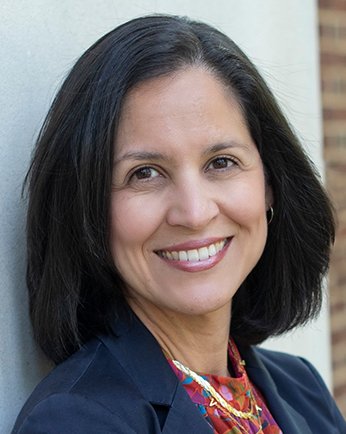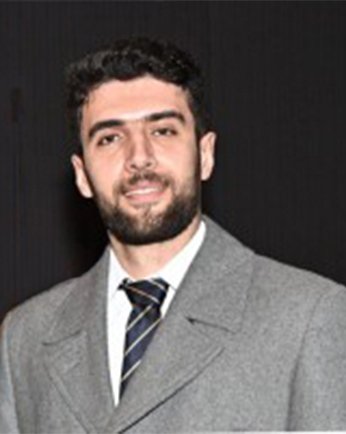Session Abstracts:

Graduate Student Researcher
UC Berkeley
Modeling Collective Emotional Polarization in Response to Hazards
Co-Authors: Guanren Zhou (University of California, Berkeley), Ziqi Wang (University of California, Berkeley), and Khalid Mosalam (University of California, Berkeley)
Abstract: Community resilience to natural hazards is not solely determined by physical infrastructure but also by the emotional well-being of individuals. Empirical evidence shows that emotional responses to hazards can vary greatly, even when physical damage is similar, highlighting an emotionally heterogeneous force that drives populations toward emotional polarization. To better understand this phenomenon, we develop a novel statistical physics model that integrates human-hazard interaction networks with social networks to analyze emotional polarization. Utilizing Landau-Ginzburg mean field theory, our model identifies conditions under which first- and second-order phase transitions in emotional polarization occur, validated by Monte Carlo simulations. Our findings emphasize two key insights: 1) the emotional polarization coefficient serves as a critical measure of emotional resilience, with significant implications for disaster preparedness and response strategies, and 2) individuals’ rationality in response to hazards can influence collective emotional states. When applied to the COVID-19 pandemic, the model quantitatively demonstrates that individuals on the eastern and western coasts of the U.S. tend to approach the hazard more rationally, though information dissemination often negatively polarizes their emotional states. In contrast, individuals in central regions are more easily influenced by others but benefit from information exchange in reducing fear. Additionally, our model analytically provides the limit-state function for maintaining collective optimism within a community. These insights provide policymakers with a robust framework for predicting and managing collective emotional states, ultimately enhancing community resilience to future hazards.

Graduate Student Researcher
University of Delaware
Modeling Household Decision-Making for Structural Retrofit Processes
Co-Authors: Rachel Davidson (University of Delaware), Joseph Trainor (University of Delaware), Linda Nozick (Cornell University), Meghan Millea (East Carolina University), Jamie Kruse (East Carolina University), Farah Nibbs (University of Maryland Baltimore County), and Gina Hardy (NCIUA)
Abstract: When homeowners respond to hurricane risk, short-term emergency preparedness is activated by a clear signal event like a hurricane warning, and decisions are made quickly. Longer-term mitigation decisions, such as making structural changes to a house, may not be activated by a distinct signal event. In this study, we treat such mitigation decisions as a process that may unfold over an extended period by introducing an innovative approach that combines (1) the Precaution Adoption Process Model as a theoretical framework, (2) a dataset merging mitigation program data and survey data, and (3) a multi-state Markov model to represent the process quantitatively. Our case study focuses on households in eastern North Carolina eligible for a grant program designed to incentivize them to strengthen their roofs against hurricane damage. We confirm that retrofit decisions are multi-stage processes that are well-described by our theoretical and quantitative models. We find that on average, it takes 15 months for homeowners to transition through the process from grant program initiation to roof installation, with two-thirds of homeowners taking 256 to 550 days. On average, households spent at least one month in almost every stage; however, they spent twice as long in the cognitive application-related stages compared to the construction-related stages. We also identified three distinct groups among the households who did not mitigate: those who are unaware of or unengaged in the decision, those who are engaged in the decision but undecided about the choice, and those who have explicitly chosen not to mitigate.

Postdoctoral Researcher
University of Delaware
Comprehending Regional Risk Analysis: Integrating Dynamic Building Inventory into a Multi-stakeholder Decision-making Framework
Co-Authors: Caroline Williams (University of Delaware), Rachel Davidson (University of Delaware), Linda Nozick (Cornell University), Meghan Millea (East Carolina University), Joseph Trainor (University of Delaware), and Dahui Liu (Cornell University)
Abstract: The Stakeholder-based Tool for the Analysis of Regional Risk (STARR) is a dynamic and stochastic computational framework designed to develop and analyze disaster risk management policies. It integrates decision-making processes from multiple stakeholders, including government agencies, insurers, and households, within the context of natural, built, and economic environments. While STARR effectively supports policy development and enhances understanding of disaster risk dynamics, its current version only accounts for temporal changes in the building inventory due to acquisition and retrofit mitigation decisions, overlooking new construction over time, which can result in inaccurate risk assessments.
To address this, the new Housing Inventory Projection (HIP) method is introduced to project the number, location, and attributes of new housing units annually over future decades and across a large, multi-county region. By incorporating this dynamic building inventory into STARR, the tool can more accurately model natural hazard impacts, particularly from hurricanes, from a macro-level perspective. The enhanced STARR framework will allow for a detailed analysis of regional hurricane-induced losses at the census tract level, the distribution of government-allocated grants over time (influenced by households’ mitigation offer acceptance), and the dynamics of insurance markets, such as purchase behaviors and insurers' financial positions.

Postdoctoral Fellow
NSF National Center for Atmospheric Research (NCAR)
FLEE: An agent-based modeling framework to understand and improve hurricane evacuations
Co-Authors: Rebecca Morss (NSF NCAR), Christopher Davis (NSF NCAR), Paul Roebber (University of Wisconsin-Milwaukee), and Jennifer Boehnert (NSF NCAR)
Abstract: Coupled natural-human models demonstrate the potential to bridge the physical, social, and computational sciences to study the complex relationships between hazards and societal impacts. One of these models, FLEE (Forecasting Laboratory for Exploring the Evacuation-system), uses an agent-based modeling approach to explore how uncertain hurricane forecast information, people, and the built environment combine to determine hurricane evacuation decision-making and traffic. This work highlights key features of FLEE, including the modeling of individual agents and their interactions with each other and their environments. Then FLEE’s simulated evacuations – specifically its evacuation orders, evacuation rates, and traffic – are compared to available observational data collected during several real-world hurricane evacuations. Finally, a few experiments are shown to highlight FLEE capacity as a research tool. This includes experiments illustrating how FLEE’s simulated evacuations change with different forecast scenarios, evacuation demand, approximations to evacuation management strategies, and changing population characteristics. In this way, agent-based models like FLEE function as a virtual laboratory for the hazards community to understand and improve the evacuation response before a hurricane strikes.
Student Researcher
California Polytechnic State University, San Luis Obispo
A Regional Scale Markov State Transition Modeling Framework for Prediction of Post-Disaster Mental Health Impacts in Disadvantaged Communities
Co-Authors: Derek C. Manheim (Cal Poly, San Luis Obispo)
Abstract: The increasing frequency and intensity of catastrophic natural disaster events disproportionally impacts the livelihoods and wellbeing of low income and minority communities. Of the broad range in human health impacts resulting from disaster events, psychological distress and associated mental health impacts are widespread, in particular, across disadvantaged communities. Therefore, this research has developed, calibrated, and applied a Markov state transition modeling framework to simulate mental health wellness states of affected disadvantaged community members at regional scales. The Markov model framework considers six unique transition states that accounts for distinct differences in community-level demographics (e.g., race, gender, age): post-traumatic stress disorder, depression, general anxiety disorder, serious mental illness, suicidality, and recovery. Transition state probabilities are informed through compilation and analysis of cohort-based, disaster-specific longitudinal mental health studies. Simulations returned by this framework generate an aggregated summary of the quality adjusted life years experienced by each community, which is used to classify the community into one of four mental health severity categories (e.g., healthy, mild, moderate, severe) throughout disaster response and recovery phases. As supported by NHERI SimCenter’s Regional Resilience Development Tool (R2D), the modeling framework has been validated against recent data obtained from impacted communities of Lake Charles, following Hurricane Laura. Application of the Markov modeling framework as a decision support tool is expected to inform equitable allocation of post-disaster psychological treatment resources and to inform health management authorities of specific locations to target response or recovery efforts to effectively mitigate adverse impacts on the livelihoods of marginalized community members.

Graduate Student Researcher
Stanford University
Comparative analysis of macroeconomic models for indirect impacts of disasters
Co-Authors: Charalampos Avraam (New York University) and Jack Baker (Stanford University)
Abstract: Natural hazards and cyber attacks pose threats to critical infrastructures and the economy through both direct impacts and ripple effects stemming from initial shocks. In response to the growing interest in understanding disaster impacts beyond physical damage, recent decades have seen a surge in literature on economic modeling methodologies for estimating the indirect economic impacts of disasters. However, there remains a gap comparing the strengths and limitations of these modeling methodologies and the need for a streamlined approach to disaster impact analysis. In this study, we review and characterize economic modeling methodologies that assess indirect economy-wide impacts from both natural hazards and cyber attacks. We conduct a comparative analysis of macroeconomic models to evaluate their applicability to disaster scenarios based on input data availability, the compatibility of model assumptions, and output capabilities. Moreover, we identify the specific damage mechanisms associated with a range of disaster types based on existing literature and investigate how these mechanisms translate into model inputs and affect modeling processes. This work provides guidance for future modelers in effectively selecting macroeconomic models and designing modeling scenarios to analyze specific disaster events.

Graduate Student Researcher
University of Maryland, College Park
Addressing Gaps in FEMA’s Public Assistance: The Role of Private Insurance and Public-Private Partnerships
Co-Authors: Allison Reilly (University of Maryland)
Abstract: Disaster recovery in the U.S. heavily relies on FEMA's Public Assistance (PA) program, which often fails to incentivize local governments to invest in resilient infrastructure and manage risks effectively. This study evaluates the roles of federal and local governments in covering disaster losses and examines FEMA’s current requirements for response and recovery. We identify gaps in FEMA’s approach, particularly regarding its influence on local infrastructure investments and risk management.
To address these limitations, we propose integrating private insurance for public entities into disaster management frameworks. This shift rebalances the roles of insurance, local governments, and the federal government, aiming to reduce financial losses and encourage proactive risk management. Mitigation and preparedness actions can lower insurance premiums and deductibles, fostering local investment in resilience. We further propose a public-private (PP) insurance system. This model not only provides a safety net for catastrophic events and promotes local resilience but also offers lower premiums compared to traditional private insurance.
Fargo, ND is used as a case study in this research. We simulate all public infrastructures in the city and apply the Red River flood model to compare the roles and contributions of local governments, federal agencies, and insurance providers. This simulation allows us to compare the roles and contributions of local governments, federal agencies, and insurance entities in managing disaster risks. Through this research, we aim to provide a comprehensive framework for enhancing disaster management policies, ultimately promoting resilient infrastructure investments and reducing the financial strain on federal resources.